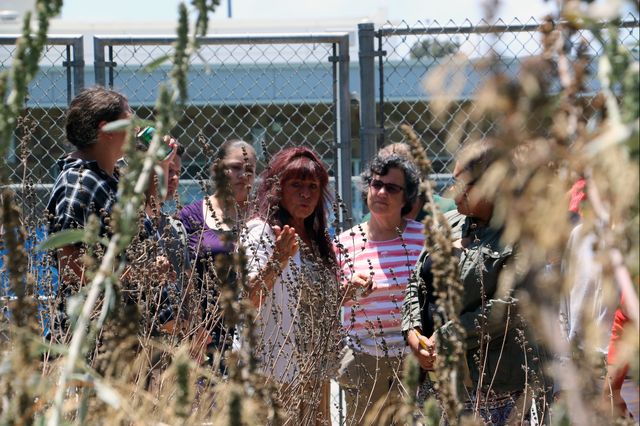Scholars and tribe members develop educational resources that shed light on California’s indigenous past, sustainable future

Tongva educator Barbara Drake teaches a group at Kuruvungna Springs about the Tongva’s engagement with the natural world. The site is enclosed on three sides by University High School.
Tongva educator Julia Bogany was interviewed recently by her great-granddaughter Marissa Aranda for a school report. The 11-year-old asked her great-grandmother: “How do you feel to be a Native American woman?”
Bogany answered honestly: “I feel invisible.”
“That is exactly how I feel,” Marissa replied.
This exchange between two generations of women descended from the people who originally populated the Los Angeles basin, prompted Bogany, the cultural affairs officer for the Gabrielino-Tongva band of mission Indians, to redouble what has already been a lifelong effort to help awaken the world to the existence of her people. Bogany and other Tongva educators have spent decades consulting with schools, cultural centers, museums and other institutions to correct misinformation about the Tongva people, share the stories of their livelihoods, their ingenuity, their traditions and importantly, their ongoing presence on the land their ancestors called home for thousands of years.
“I always say Tongva women never left their ancestral homeland,” Bogany said. “They just became invisible. ‘How do we make ourselves not invisible?’ is the question I ask every day.”
It is a question many UCLA professors are asking as well. And seeking to answer.
Recently, Bogany and a group of fellow Tongva educators gathered with two dozen elementary school teachers from across Los Angeles, as part of a UCLA-led program to increase the educators’ understanding of the Tongva community and history. The goal was to develop curriculum for third-grade teachers. The two-day workshop was called “Teaching the Tongva” and was co-sponsored by the UCLA American Indian Center, the Cal State Dominguez Hills History Project and the UCLA History-Geography Project.